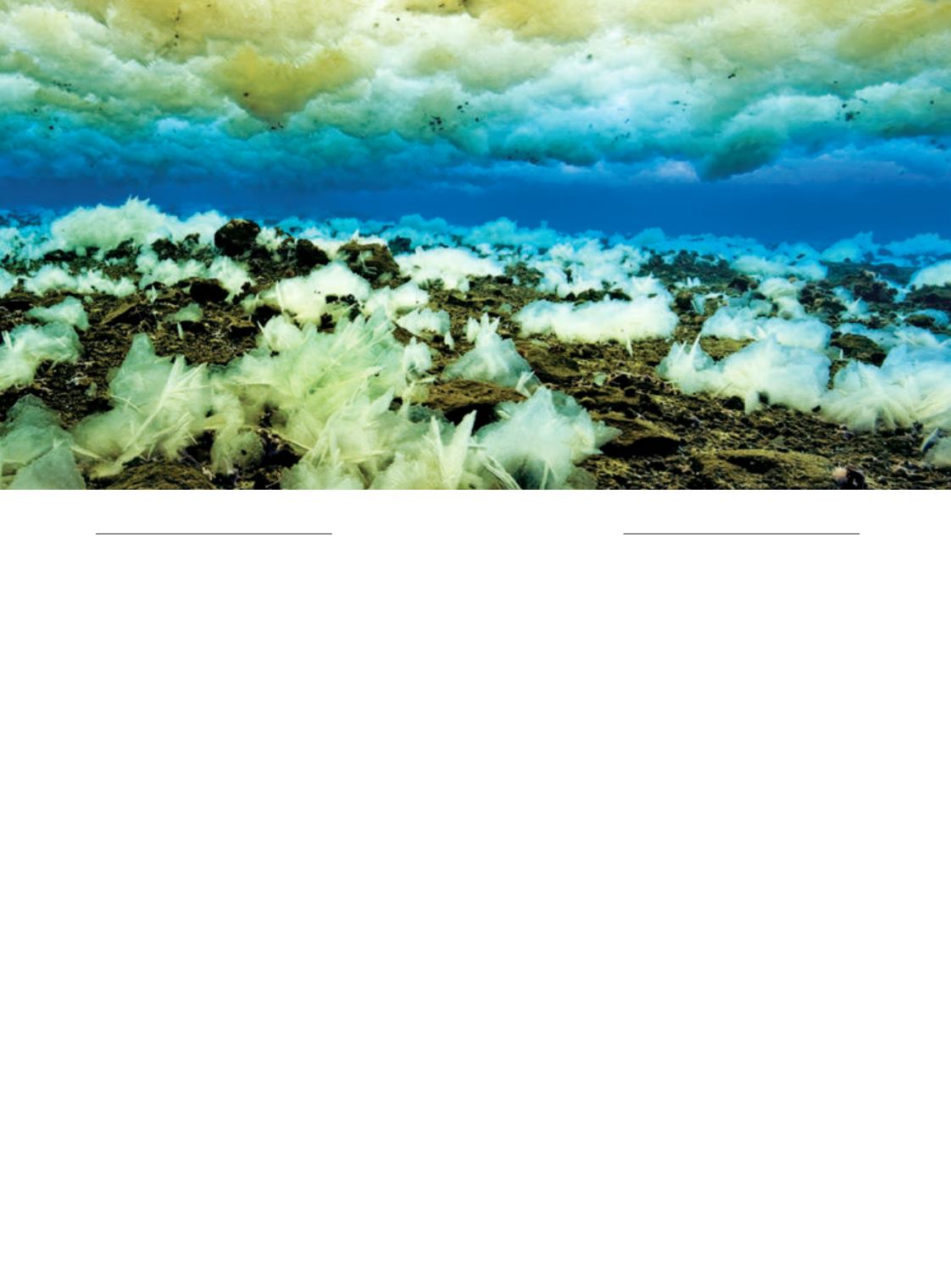

STEPHEN FRINK:
I became aware of the Ross Sea
in a conversation with Sylvia Earle, Ph.D., coincident
with her declaration of the region as one of her “Hope
Spots.” She suggested I look at your photography to
gain greater insight into the region. I was blown away
by the artistry and passion evident in your photos but
also by the physical challenges you underwent to bring
home such meaningful images from such a difficult
environment. Of course, that prompted a cover story
in theWinter 2013 issue of
Alert Diver
. Tell me a little
bit about yourself and the forks in the road that led
you to the Ross Sea.
JOHN WELLER:
First off, thank you, Stephen. That
means a lot. The Ross Sea conservation story has
been a central part of my being, consuming much of
my professional life over the past 15 years. It has also
had a tremendous impact on my personal life as it
introduced me to my wife, Cassandra, and led to our
daughter. Cassie did her master’s degree on toothfish,
and I had read one of her papers. She’s spent more
time on boats in Antarctica than I have — and as a
researcher. She is one of my heroes. Her doctoral
dissertation relates to the Ross Sea, so as you can
imagine we’ve had lively conversations about all things
Antarctica over the years. But for me, photography
was the hook that brought me there.
As a kid growing up in Boulder, Colo., I was obsessive
about photography. My parents gave me my first
camera, a 110-film point-and-shoot, when I was 4,
and by the time I was 8 I’d graduated to my mom’s
Nikon FM2 with a 300mm telephoto lens. Sitting
for hours watching birds and photographing wildlife
became a lifelong passion. I went to college to study
environmental economics, but I remained torn about
my life’s direction. My sister gave me sage advice at the
height of my angst. She said I should be a poet. Any
poetry I was capable of came through a camera, so I
ALERTDIVER.COM|
91
SHOOTER
JOHN WELLER
P HO T O S B Y J OHN WE L L E R
T E X T B Y S T E P H E N F R I N K A ND J OHN WE L L E R
[
[
PHOTOGRAPHY
FOR A CAUSE


















